Ian Bamsey is the world’s leading motorsport technology writer. Bamsey has a degree in Town and Country Planning from the University of the South Bank in London but since he graduated in 1977 he has specialised in motorsport journalism. He worked first for the weekly Motoring News in London, rising to the post of international racing editor before helping create a new British monthly magazine, Automobile Sport. Since the mid eighties Bamsey has concentrated on the technical side of motorsport. First he wrote a series of books on contemporary and historic racecars for the Haynes Publishing Group. The International Race Engine Directory of 1989, now a much sought-after collectors’ item, was the forerunner of Race Engine Technology, which came into being in the Summer of 2003.
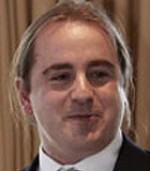
A degree-qualified mechanical engineer with over 15 years of racing engine design and development experience, Wayne brings his expertise to the Race Engine Technology team. Now working as an independent consultant / designer through Vitesse Engineering Services mainly on racing and automotive projects, he has not only worked for some of the manufacturer Formula One teams on engine development (including championship winners), but also had a number of years in sportscar engine design with some of the major players. A passion for motorcycles fuelled his enthusiasm for engineering and motorsport. He can be found at motorsport events large and small.
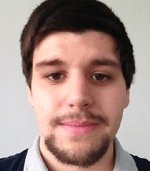
Dave studied Mechanical Engineering at the University of Warwick, graduating in 2010 and competing in the UK’s Formula Student event that year. After a brief stint at McLaren Racing, he joined the Warwick Manufacturing Group and is currently researching for a PhD in the field of Additive Layer Manufacture, an exciting technology for improving performance of components in the autosport and aerospace industries. He says writing for RET provides an enjoyable opportunity to gain a highly detailed understanding of many differing areas of powertrain technology he would otherwise not be exposed to.
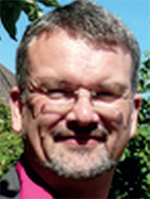
Nick Flaherty is one of the world’s leading electronics technology journalists. He has been covering the latest developments in semiconductor, embedded software and electronics technology for the last 25 years as a writer, editor, analyst and consultant. His expertise is now applied to the uncrewed systems market, where the technology is moving fast. He brings detailed technical knowledge, analysis and experience of hardware and software system development to deliver a unique insight into the challenges of this exciting, cutting edge market.
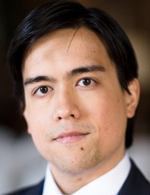
Rory Jackson is a technology analyst and writer. Over the past five years he has investigated trends and advances in aerospace, machine and digital systems, with particular regard to the opportunities and threats of emerging technologies to defence, security, and heavy industries. His current focus is on uncrewed systems, involving regular international travel to explore the latest techniques, ideas and patents from the world’s most prolific technology hubs.
Peter Donaldson has been covering the technology of uncrewed vehicle systems in particular and aerospace and defence in general since the mid-1980s. He cut his teeth on a range of titles covering civil and military helicopters, regional airliners, UAVs, space technology, military sensors and communications and advanced materials and has been a freelance writer and editor since 2010. Peter has been nominated for the Bill Gunston Technology Writer of the Year Award three times.
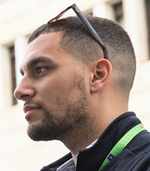
After graduating from Oxford Brookes University in 2013 with a degree in Motorsport Technology, Stewart moved straight into the world of technical motorsport media working for Racecar Engineering magazine. Following a couple of years in the commercial side there Stewart moved to join the editorial side of High Power Media, contributing to all publications within the group’s portfolio. Stewart now heads the editorial research on Race Engine Technology, ensuring it remains the most in-depth and technical motorsport powertrain publication on the market and covers the most diverse engine stories from around world.
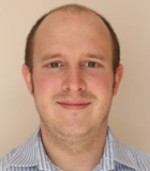
Motorsport has been a lifelong passion for Lawrence, be it competing, preparing, writing about or photographing racing cars. His journalistic career began in 2004, shooting winter sports action in British Columbia, Canada. Following a return to the UK, he worked for Autosport magazine before moving to Racecar Engineering magazine in 2007, allowing him to indulge his interest in the more technical aspects of motorsport. In 2010 Lawrence went freelance, writing for a number of technical motorsport and classic vehicle publications and is now the Editor of our Race Technology Reports series of magazines.
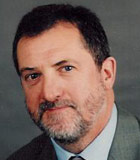
With over 45 years’ experience in motorsport powertrain engineering, design and development that has covered International Rally Championships, World and National Touring Car Series, Sports Cars and includes some eight years with Cosworth Racing, managing their Formula 1 customer engines division, David has certainly served his time. He now provides an independent motorsport design consultancy service from his base in Abingdon, Oxfordshire and is currently involved with the Powerboat P1 Offshore Championship working with a variety of marine racing engines ranging from twin supercharged V8s, Ilmor V10s and Seatek high performance marine diesels. “After a lifetime involvement, race engines, whether on land or water, two wheels or four, still give me one hell of a buzz!”
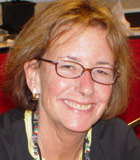
Annie has written about motorsport for over 30 years, using her home base of Long Beach, California and travelling to races across the US. Her area of expertise centres on the open wheel arena. Her affiliation with Race Engine Technology has allowed Annie to learn even more about the fascinating business of race engine design and construction.
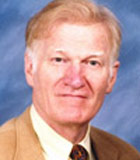
Jack holds a master’s degree in engineering, and is an accomplished machinist, a commercial pilot and certified flight instructor. In his youth, he was a winning driver in a variety of automobile racing categories including rear-engine formula cars, sports cars, midgets and stock cars, and has won several championships. He has been actively involved in piston and turbine engine development since the ‘50’s. He has designed, configured, built and modified successful engines for a wide variety of specialized applications including aircraft and race winning cars. His consulting company, EPI, Inc., specializes in custom powerplant engine and gearbox products for high performance aircraft, both fixed-wing and helicopter applications.
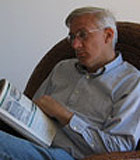
John is the technical director of ES&S Engineering, a firm specializing in engineered components for advanced powertrain and electronic/instrumentation applications, with a particular emphasis on precision thinwall casting. “We undertake a variety of application work and/or reverse engineering. Our most recent product is an improved Lotus twincam cylinder head.” Originally trained as a jet engine metalsmith, John is also a patternmaker and machinist, and has managed many rapid prototyping/manufacturing programs, developing several proprietary foundry processes along the way. Motorsports have been a lifelong interest area, and John has owned a number of formula cars, winning a regional club championship in Formula Atlantic (FB) years ago. He is currently restoring a Brabham BT-29, and is the developer of the dual swirl porting system reported on in Race Engine Technology magazine.
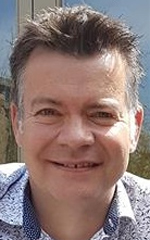
Matt graduated from Reading University with a Mechanical Engineering degree in 1992, and then spent 4 years at MIRA on the IMechE graduate training scheme, eventually gaining Chartered Engineer status. With a life-long passion for racing, Matt joined Cosworth’s F1 design group in 1996, starting as a design engineer before being appointed as project manager and then operations manager for the F1 group. In 2013 Matt left Cosworth to start up his own company, Modatek. Initially an engineering consultancy, Modatek quickly became a source of Cosworth parts for historic engines, using Matt’s knowledge of the wide range of Cosworth's historic engine projects.
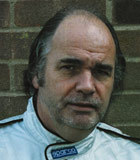
A mechanical engineer by training John has spent a large part of his working life in Research and Development in the automotive industry. A motorsports enthusiast since the age of 5, he now prefers to spend his time either working on or writing about the cars and engines he loves so much. A former competitor in karting, rallying and circuit racing, a return to competition in the form of less arduous but more intense hill climbing is planned as soon as the rebuild of his latest project, a Mallock clubman’s car is complete.
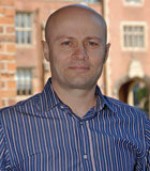
Born in Belfast, Northern Ireland in 1967, Charlie McCartan studied Mechanical Engineering at Queen’s University Belfast (QUB), graduating with a PhD in 1995. Since then, he has worked for five years in engine research, five years in industry and the past six years in the School of Mechanical & Aerospace Engineering at QUB. His time in industry was spent as a senior mechanical engineer and team leader at FG Wilson, then as a technical specialist and technical manager for Optimum Power Technology. Since 1996, McCartan has been involved in an engine simulation and design consultancy role. Along with the late Professor Gordon Blair he wrote the 4stHEAD suite of engine simulation tools which are now used by engine and valvetrain groups worldwide. He is now the Senior Associate of Prof Blair and Associates.
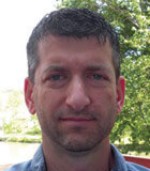
Born in Maryland, US, in 1967, David George studied at the University of Maryland, where he obtained a BSc in Aerospace and Mechanical Engineering and an MSc in Mechanical Engineering, his thesis, “Optimizing High Speed Engine Inlet Systems”. Having initially worked for NPTI on its GTP and CART programmes, from 1993 to 1997 George worked as senior engineer for HPD on the company’s first IndyCar championship. In addition to track support, he became heavily involved in the design of Honda factory race engines, spending considerable time at Honda’s Tokyo racing/r&d facility. George moved to the UK with Cosworth Racing from 1997 until 1999. He then spent ten years as technical director of Roush Yates Engines, overseeing and winning both NASCAR and ALMS championships. After being Adjunct Faculty for 11 years at the University of North Carolina, in 2010 he began a three-year full-time tenure there as Distinguished Lecturer of Mechanical Engineering, also serving as the Director of the Undergraduate Motorsport Engineering Program. While teaching, George started his own consulting firm and now does considerable work with a variety of race engine and parts manufacturers globally.
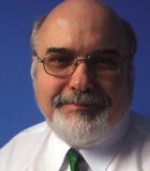
Born in Coventry, England, in 1960, Nick Hayes graduated from Salford University with a BSc (Hons) engineering degree. As a teenage racing enthusiast he had worked with Mick Hill Cars and Racing, then he joined Rolls-Royce Aero Engines as an undergraduate apprentice. In 1984, Hayes joined Cosworth, working in design then development and track support before leading the design team that produced the World Championship-winning EC engine. After spells as technical director and managing director, engineering, he left Cosworth in late 2004. From 2005 to 2008, as director of engine r&d at RCR/ECR, Hayes led the effort that saw RCR win races with some of the most competitive and reliable engines in NASCAR. Moving back to the UK, family commitments became his focus for some years, but he returned to the engineering fray in 2013 through his consultancy business and moved straight back into Formula One, working with Marussia. He had the role of operations director for the Manor F1 Team until its demise.
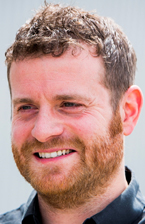
Ryan Maughan founded the AVID Technology Group back in 2004 and has led its growth and development ever since. As well as being an award-winning entrepreneur, he is an engineer by background with a degree in Mechanical Engineering from UMIST and an MSc in Engineering from the University of Durham. Ryan worked in the motor racing industry in his formative years, learning about high-performance engineering and developing a unique blend of hands-on practical skills with high-level engineering expertise. After a few years of working in a high-precision machining business, AVID was born, with the mission from the outset to develop new technology that will reduce emissions and fuel consumption of vehicles through improved control.
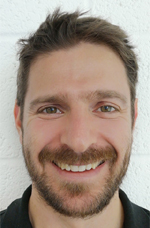
Danson Joseph has had a varied career in the electrical power industry, having worked in areas ranging from systems engineering of photovoltaic power plants to developing the battery packs for Jaguar Land Rover’s I-Pace SUV. With a PhD in electrical machines from the University of Witwatersrand in South Africa, Danson has focused on developing battery systems for automotive use. After completing the I-Pace project for Land Rover he formed Danecca, a battery development company with a focus on prototyping and small-scale production work, as well as testing and verifying cells and packs destined for mass production.